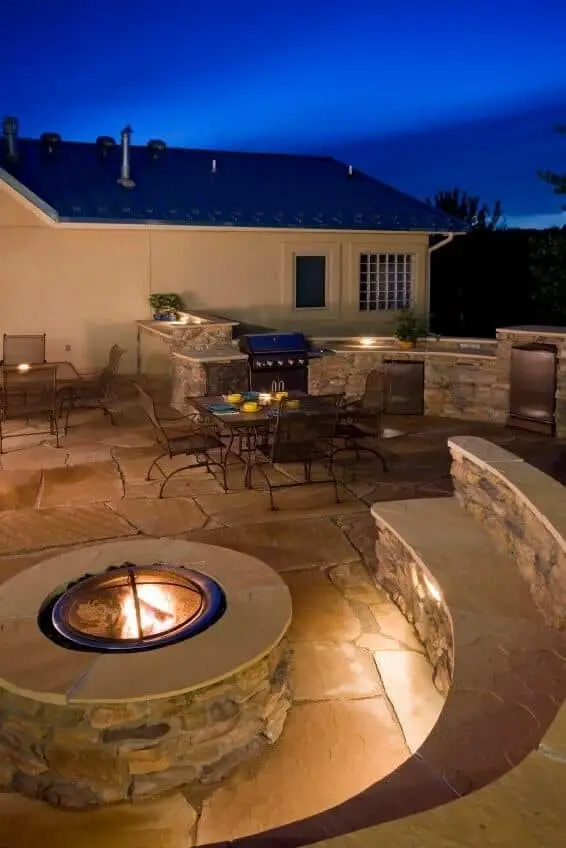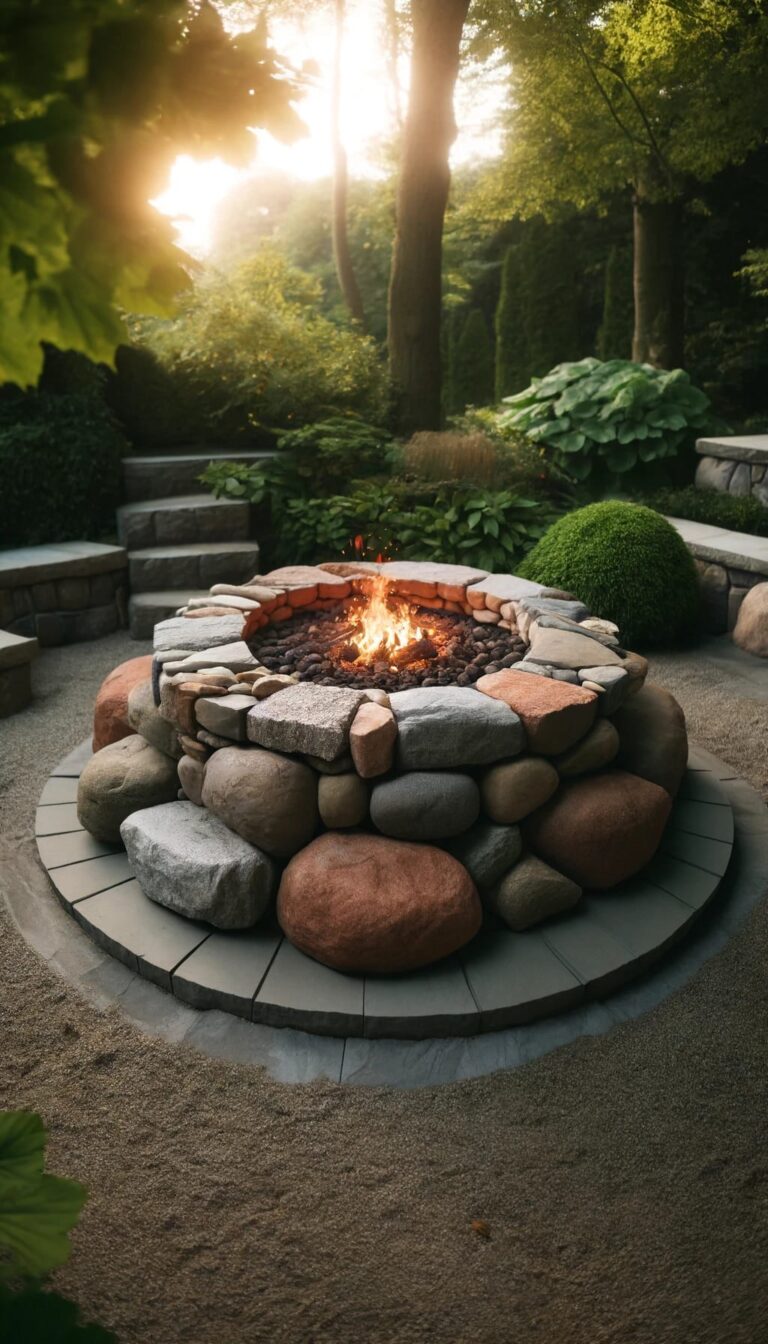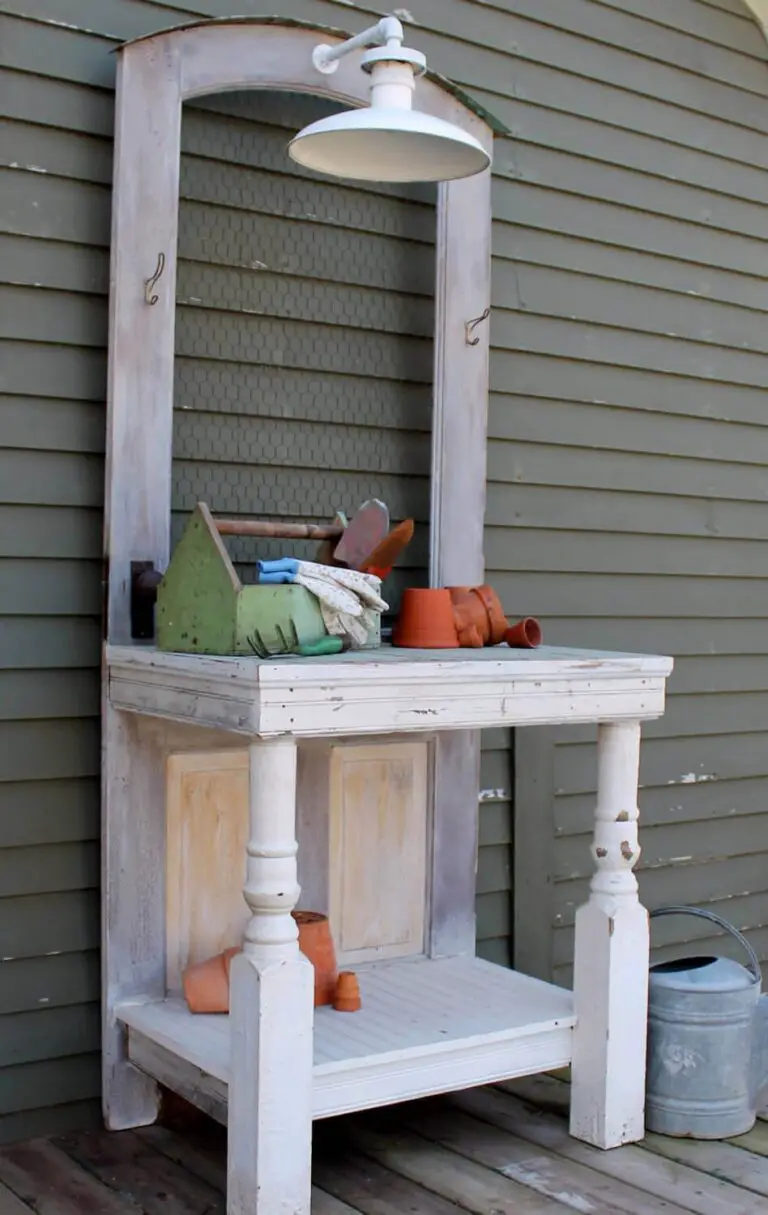34+ Different Types Of Garage Doors: Styles, Materials (With Pictures)
When it comes to selecting the perfect garage door, the options can be overwhelming. With so many variables at play – including the type of garage, its layout, and size – choosing the right door is crucial. In this post, we’ll delve into the various types of garage doors available, from sectional to tilt-up models, and explore the different styles, materials, and opener systems that can be used.
We’ll also examine factors such as appearance, durability, and energy efficiency to help you make an informed decision. Additionally, we’ll cover some common questions and concerns people have when it comes to garage doors, including maintenance, installation, and repair. Whether you’re building a new garage or upgrading an existing one, this post aims to provide a comprehensive overview of the world of garage doors.
Types of garage doors
While it may come as a surprise, there’s actually a wide variety of garage door options available. In fact, when exploring your choices, you’ll discover that there’s more than meets the eye. To give you a better understanding of what’s out there, let’s take a look at some of the most prevalent types of garage doors on the market.
Sectional garage doors
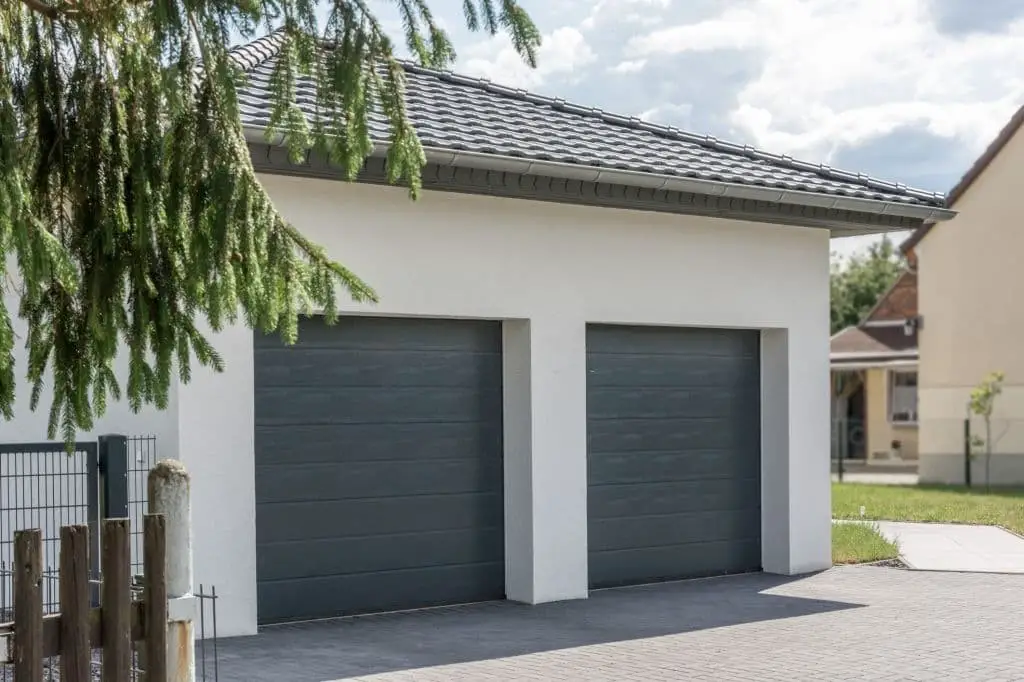
One of the most recognizable types of garage doors is the multi-sectioned model. It’s characterized by its distinct panel structure, which typically comprises at least five individual sections connected by hinges. When the door is opened, these panels hinge inward and then slide up to sit comfortably under the ceiling, providing a smooth and seamless operation.
Roller garage doors
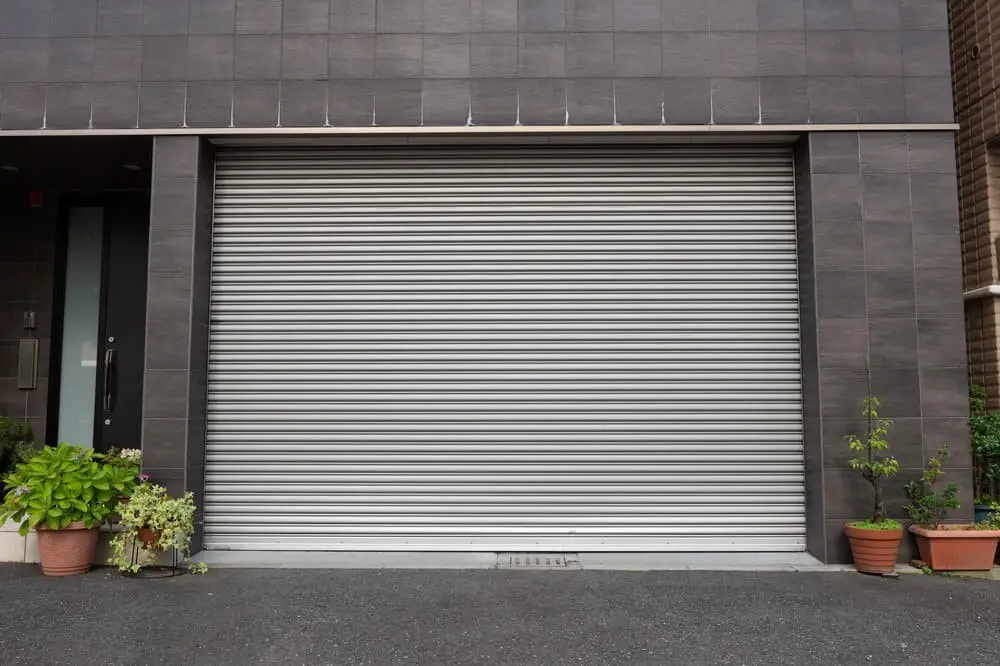
In many commercial settings, this type of garage door opener is the norm. However, when you’re working with limited ceiling space in a residential setting, a drum-style opener is often the most practical choice. Characterized by 2-3 steel slats that revolve around a central drum as the door opens and closes, these systems are engineered to withstand heavy use and can be designed without springs, ensuring they remain resistant to corrosion and rust.
Side-hinged garage doors
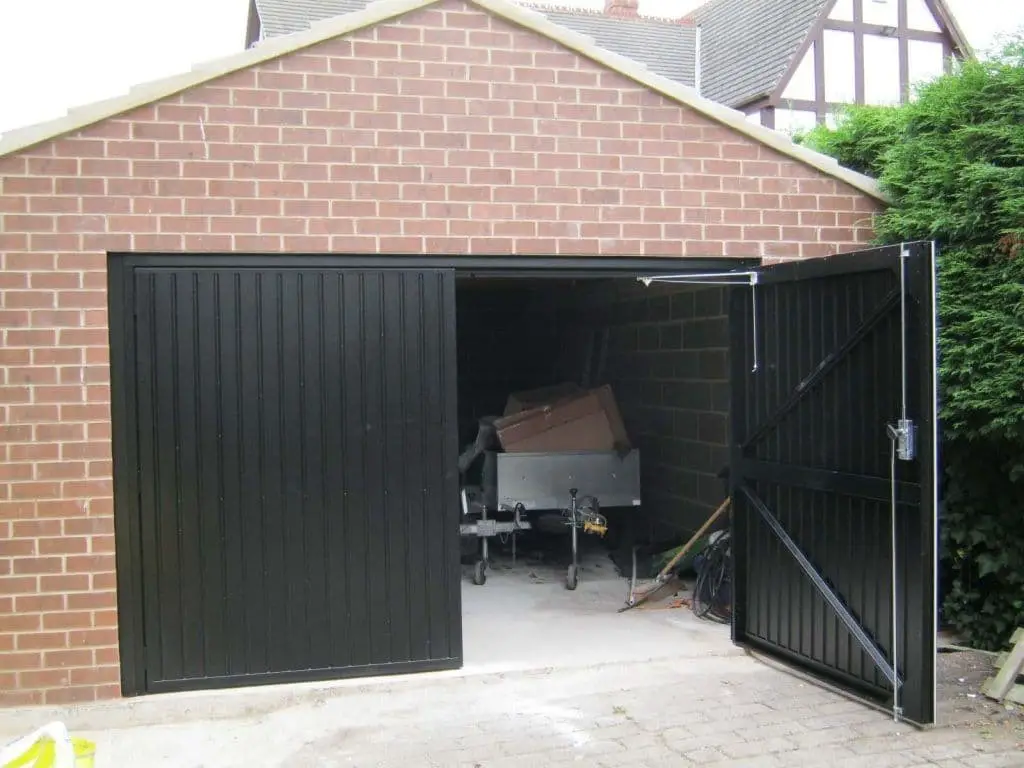
Another classic design for garage doors is the hinged frame style, which features a pivoting mechanism on either side of the opening. This design is reminiscent of larger barn doors and can be crafted from wood or galvanized iron materials, making it an ideal choice for garages with limited vertical clearance. Interestingly, automated versions of this type of door are now available, offering increased convenience and functionality.
Side-sliding garage doors
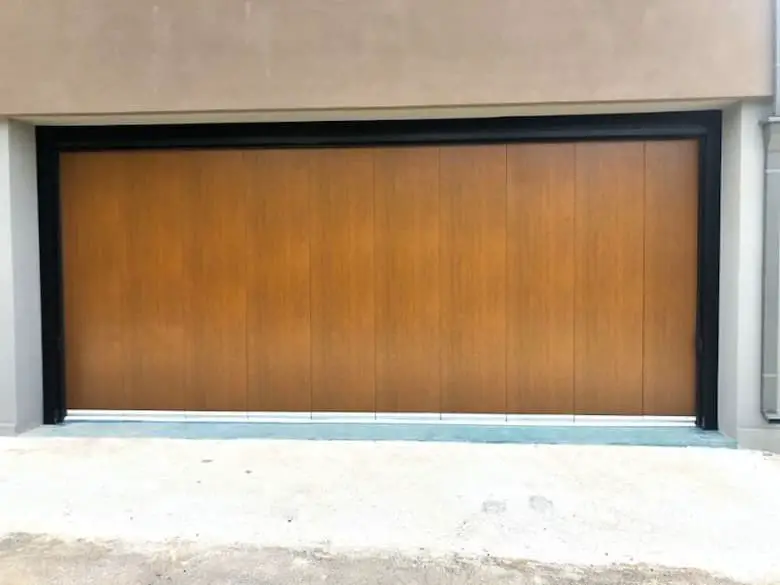
For those who adore the uncomplicated charm of sectional doors or roller types but are constrained by limited headroom, the slide-out design offers a perfect compromise. Its name is telling – it glides smoothly to the side, providing unobstructed access without sacrificing precious vertical space.
Slide to the side garage doors
The inclined overhead garage door type, also known as an insulated sectional door, is designed to flex to one side before aligning parallel to the wall. Its unique design makes it an excellent choice for garages with restricted ceiling space. One of its key benefits is the integration of a retractable motor, which streamlines the opening and closing process by eliminating the need for springs, providing a more automated operation.
Tilt-up/up and over canopy garage doors
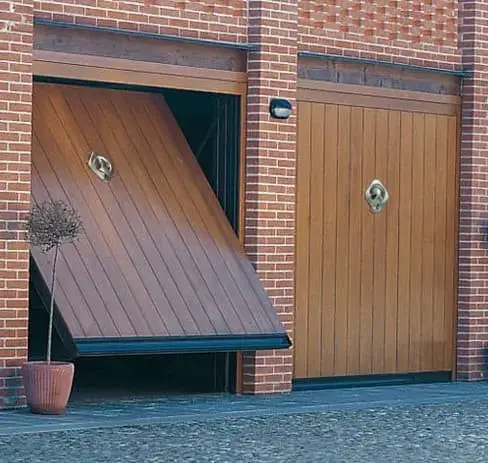
The modern tilt-up garage door stands out for its sleek design. Unlike side-hinged models, this type of door is constructed from a single solid piece, without visible sections or seams. One of its distinctive features is the pivoting mechanism that allows it to tilt upwards as it opens, creating a canopy-like effect when fully extended. When open, the door extends beyond the house, offering an expansive view and easy access.
Tilt-up/up and over retractable garage doors
In contrast to tilt-up and over canopy garage doors, this type of door is suspended entirely from the frame, without any protrusion beyond the main house. This design offers a sleeker appearance compared to its counterpart, where the door extends outwards. However, this setup also presents a drawback – they can be more challenging to operate than other types.
Garage door styles
When it comes to your garage door, the visual appeal is just as important as its functional purpose. The style you choose not only defines the overall aesthetic of your garage but also contributes to the cohesiveness of your home’s exterior design. A thoughtfully selected garage door can even inject personality into your house’s general appearance, creating a unique charm that sets it apart from others in the neighborhood.
Paneled
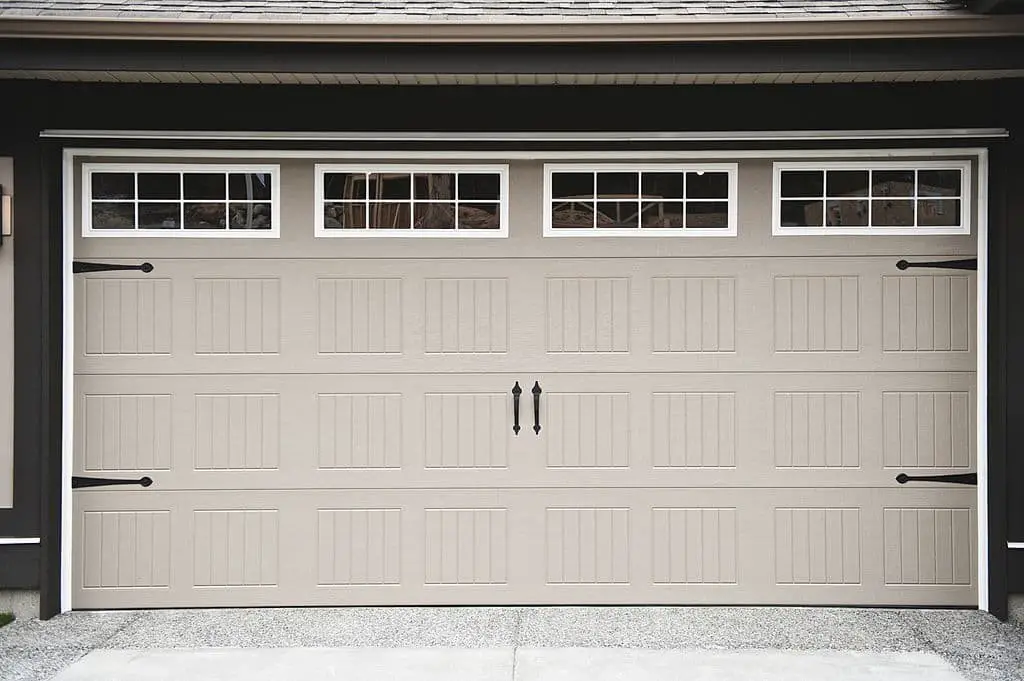
While the traditional up-and-over design remains a crowd-pleaser, the modern paneled garage door has taken center stage. This versatile option allows homeowners to inject their unique style into the exterior of their property. With options ranging from classic suburban panels to rustic and automated designs, you can easily find a look that complements your home’s aesthetic.
Furthermore, contemporary paneled garage doors often prioritize thermal efficiency, offering enhanced insulation and reduced energy consumption.
Carriage house double garage doors
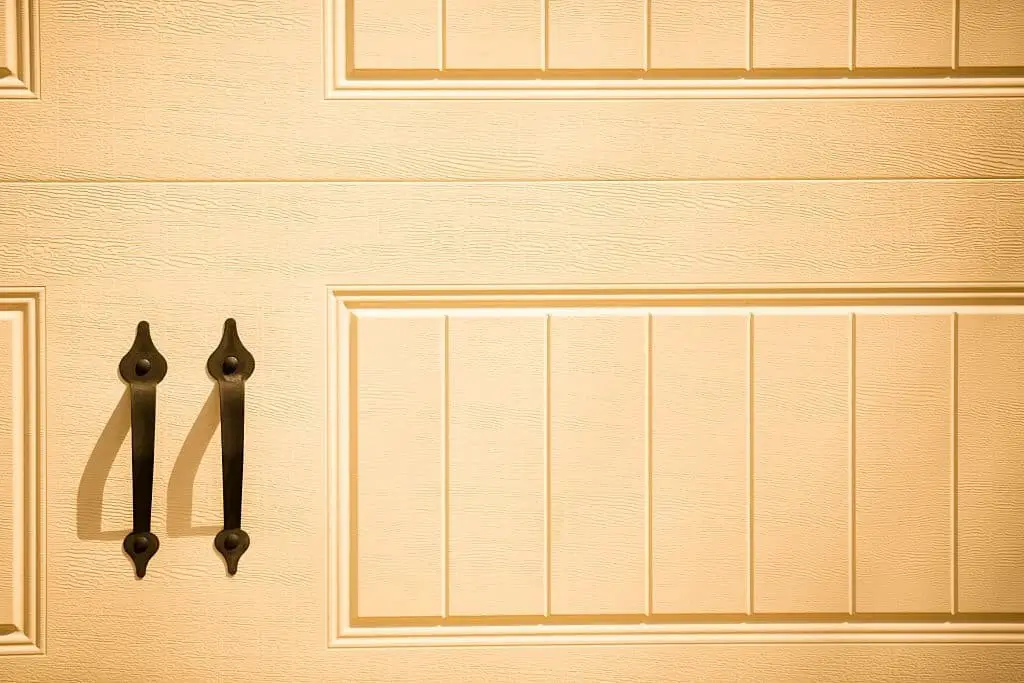
The rustic charm of swing-out garage doors stems from their traditional design, which deviates from the paneled style. A defining feature is the presence of double-fitted windows situated near the ceiling, lending a timeless aesthetic that, although still appreciated, has seen its popularity wane in recent times.
French style garage doors
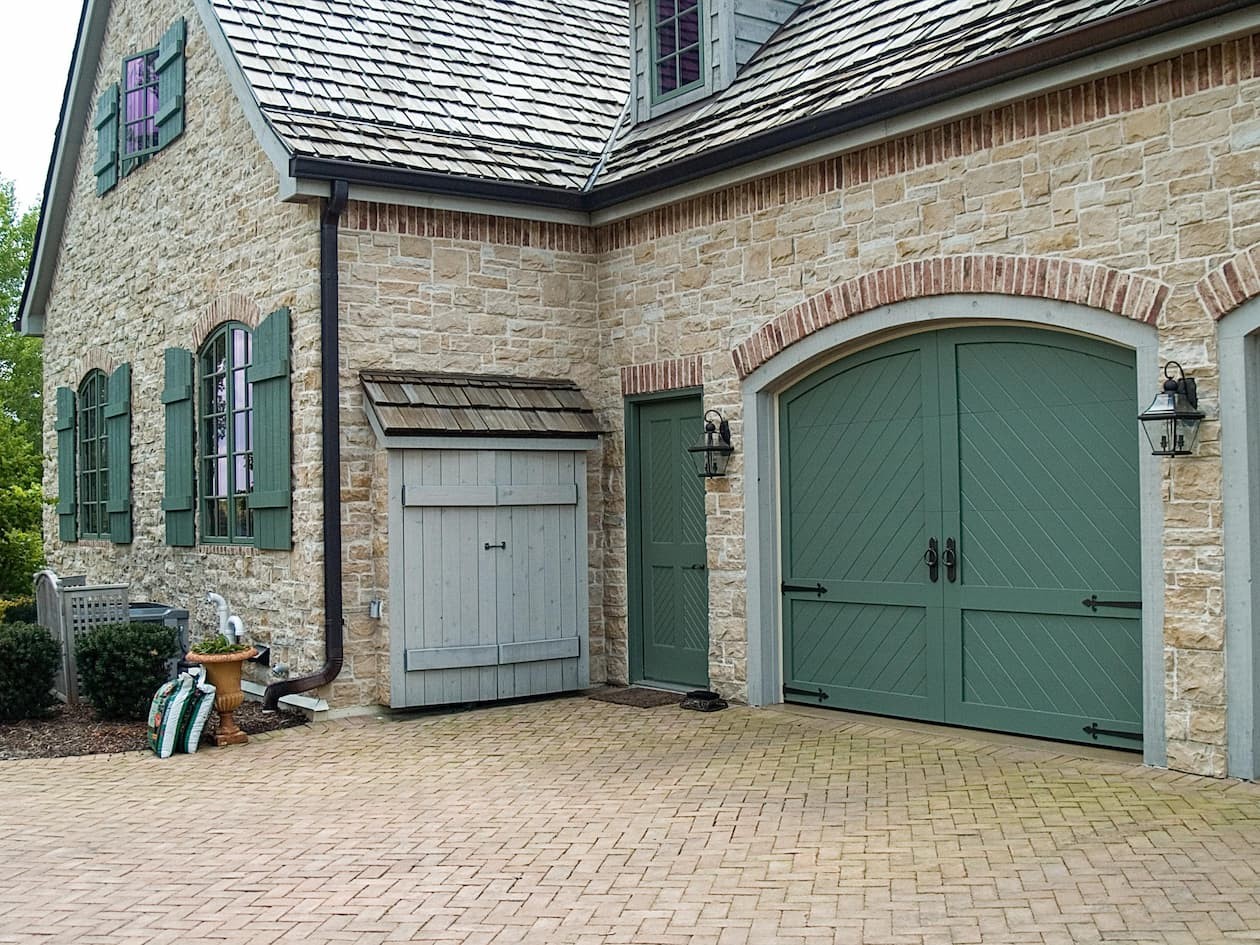
When it comes to adding a touch of sophistication and elegance to your home’s exterior, French-style garage doors are definitely worth considering. Characterized by their classic design, these doors can feature multiple panels or a single panel, offering a range of aesthetic options. While they may not provide the same level of insulation as some other door styles, their unique charm and visual appeal make them a popular choice for homeowners seeking to enhance their property’s curb appeal.
Traditional
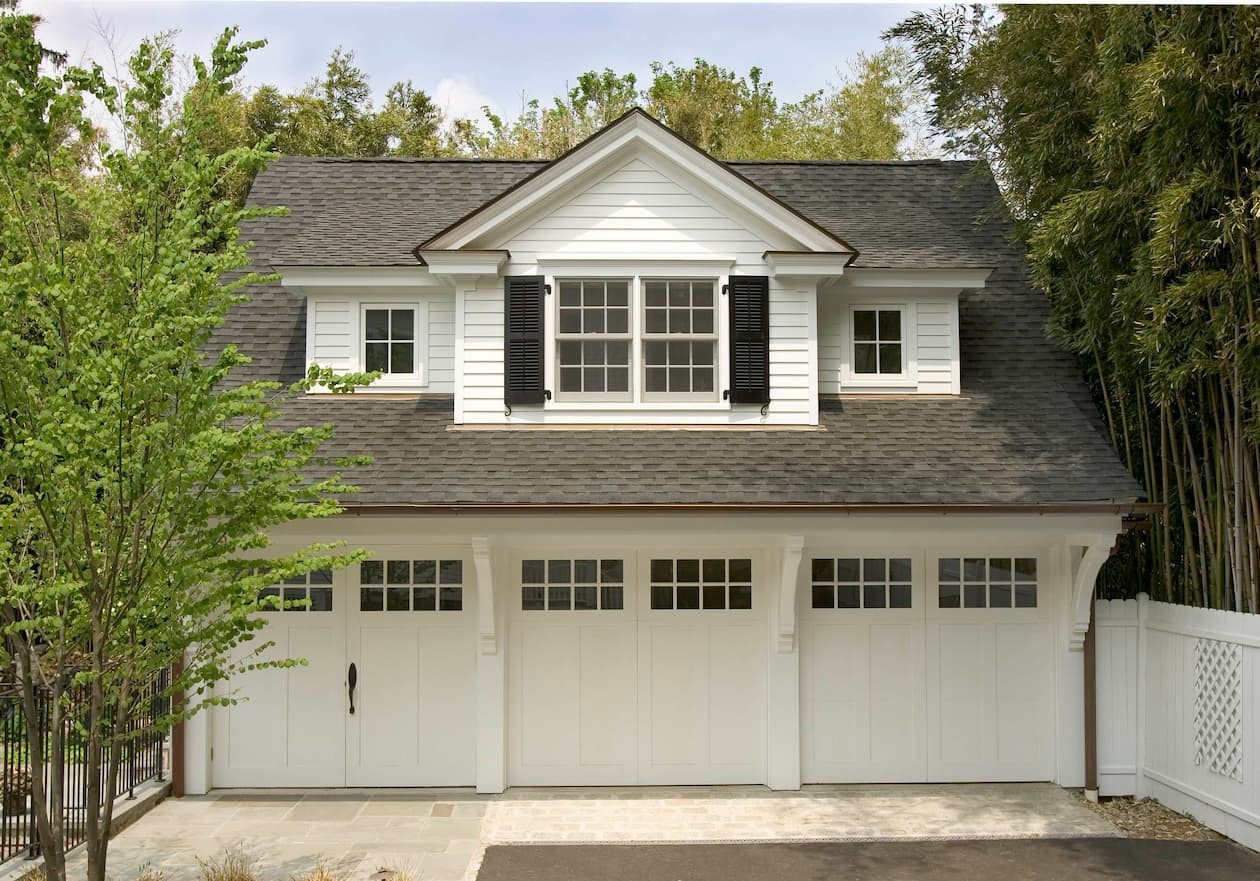
Despite the advent of modern materials, traditional garage door styles that feature solid wood constructions continue to be a sought-after option. The rustic charm and subtle color palette of these classic designs allow for a harmonious blend with the surrounding architecture, creating a visually appealing exterior aesthetic.
Craftsman
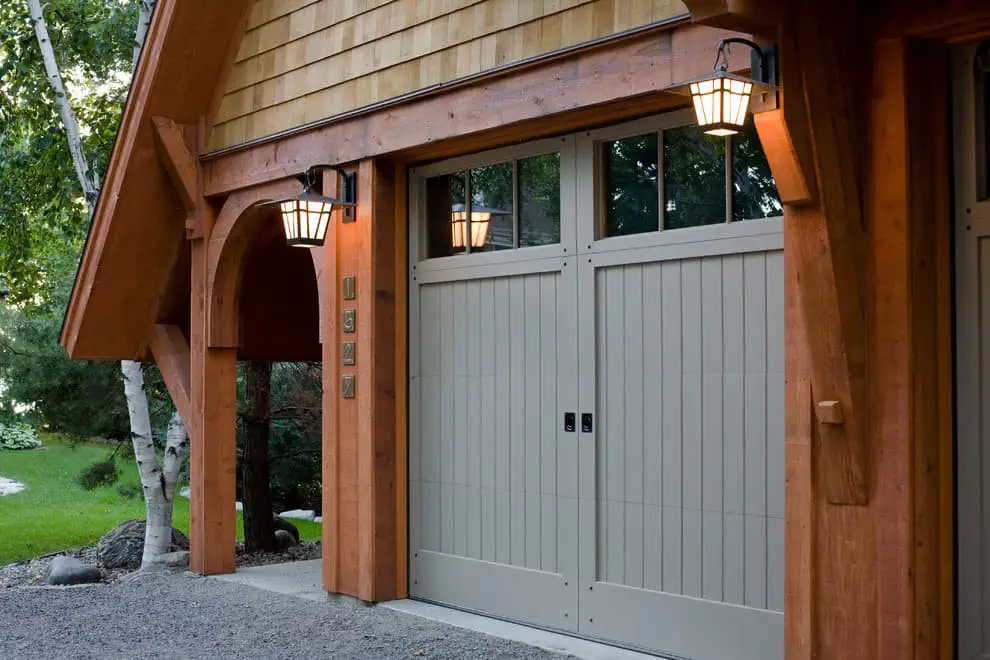
A Craftsman-inspired garage door style can significantly enhance the charm of a bungalow home. To achieve this rustic look, consider adding faux hinges, cross beams, and ornate handles to your garage entrance. These design elements not only serve their practical purpose but also contribute to the overall aesthetic appeal of your property, making it stand out with its unique country flair.
Mission
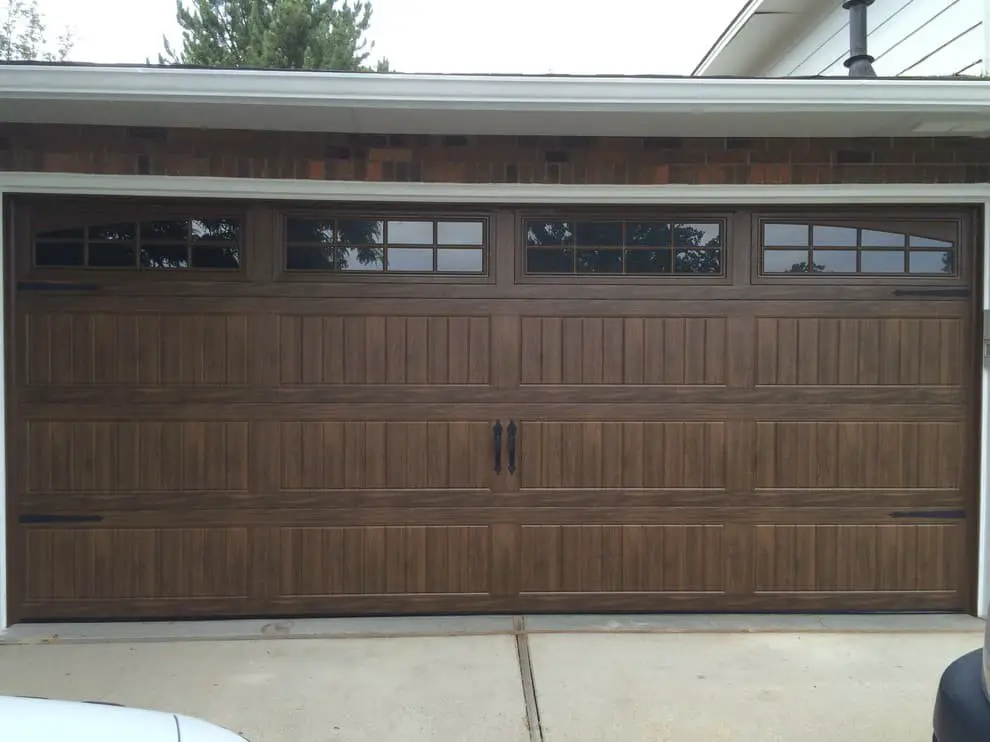
To inject a dose of Mediterranean flair into your garage door’s aesthetic, consider opting for the distinctive Mission style. Characterized by ornate nail heads, sturdy iron strap hinges, and vintage-inspired metal handles, this design pays homage to the architectural grandeur of Spanish colonial homes. By incorporating these decorative elements, you can breathe new life into your garage door’s exterior, imbuing it with a sense of timeless elegance and sophistication.
Modern
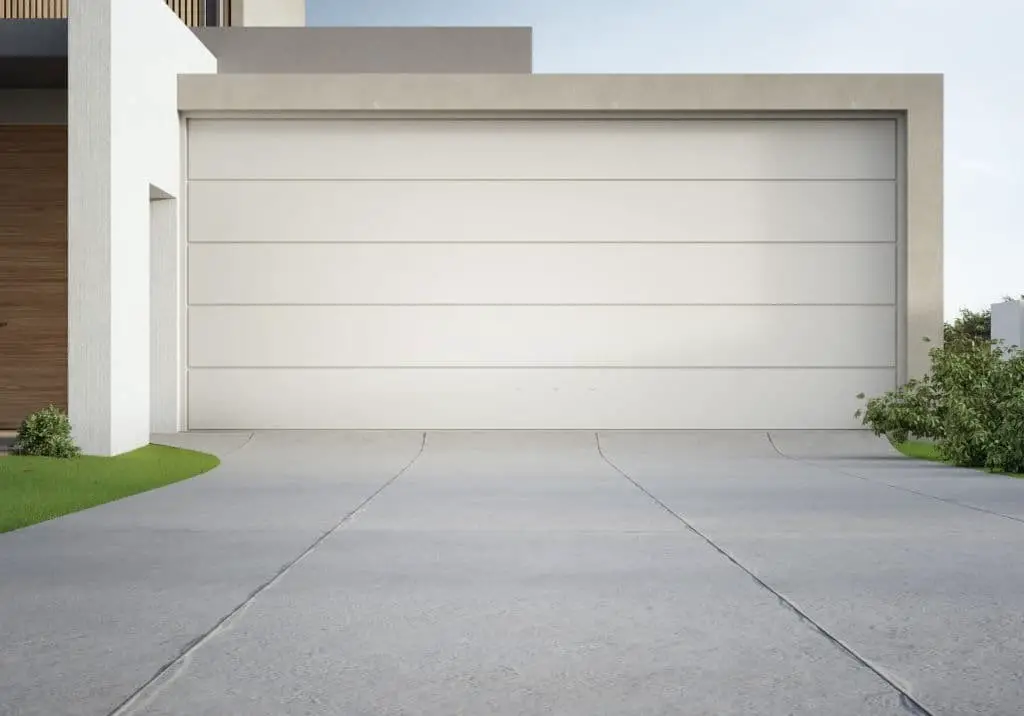
In terms of aesthetic appeal, modern garage doors are highly versatile and can seamlessly integrate into a minimalist design scheme. By opting for a combination of materials such as metal, steel, wood, glass, or even Japanese shoji screens, homeowners can create a cohesive look that complements the exterior of their home. The beauty of this style lies in its ability to strip away unnecessary details, allowing the clean lines and simple features to take center stage.
Rustic
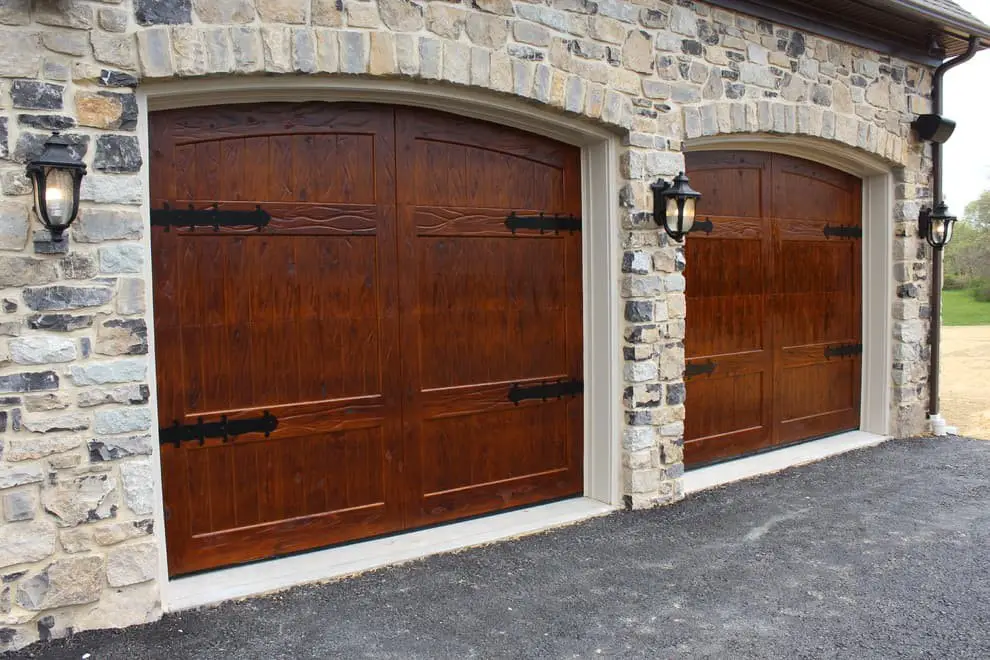
While not the most polished appearance, this rustic-inspired garage door has a certain charm that never fails to impress. The distressed, unstained, knotty, or rough-sawn wood options all work together to create a look that’s reminiscent of traditional farmhouses and the rolling countryside.
Garage door materials
When selecting a garage door material, it’s crucial to consider its impact on the overall performance, functionality, and longevity of the garage door system. The material choice directly influences factors such as durability, thermal insulation, and maintenance requirements, all of which can significantly affect the user experience and overall value of the garage door.
Wood
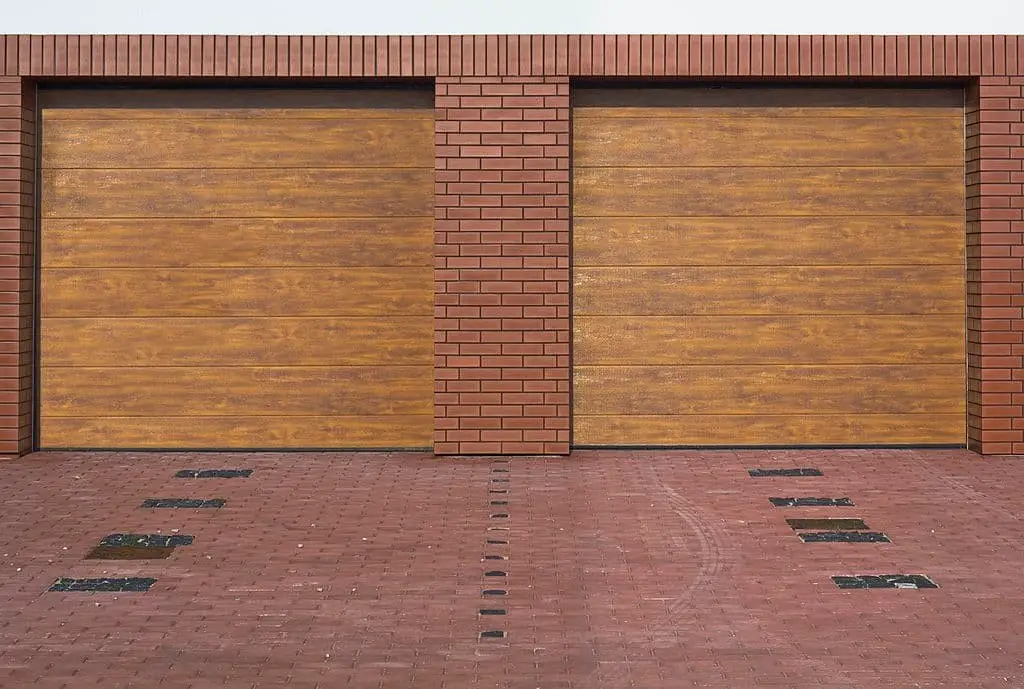
Wooden garages can evoke a sense of timeless charm, offering a homey and inviting aesthetic that seamlessly blends with various exterior styles. However, their susceptibility to warping, expansion, and rot makes them less than ideal for locations prone to harsh outdoor conditions. Furthermore, the long-term maintenance costs associated with wooden garages can be substantial.
Aluminum
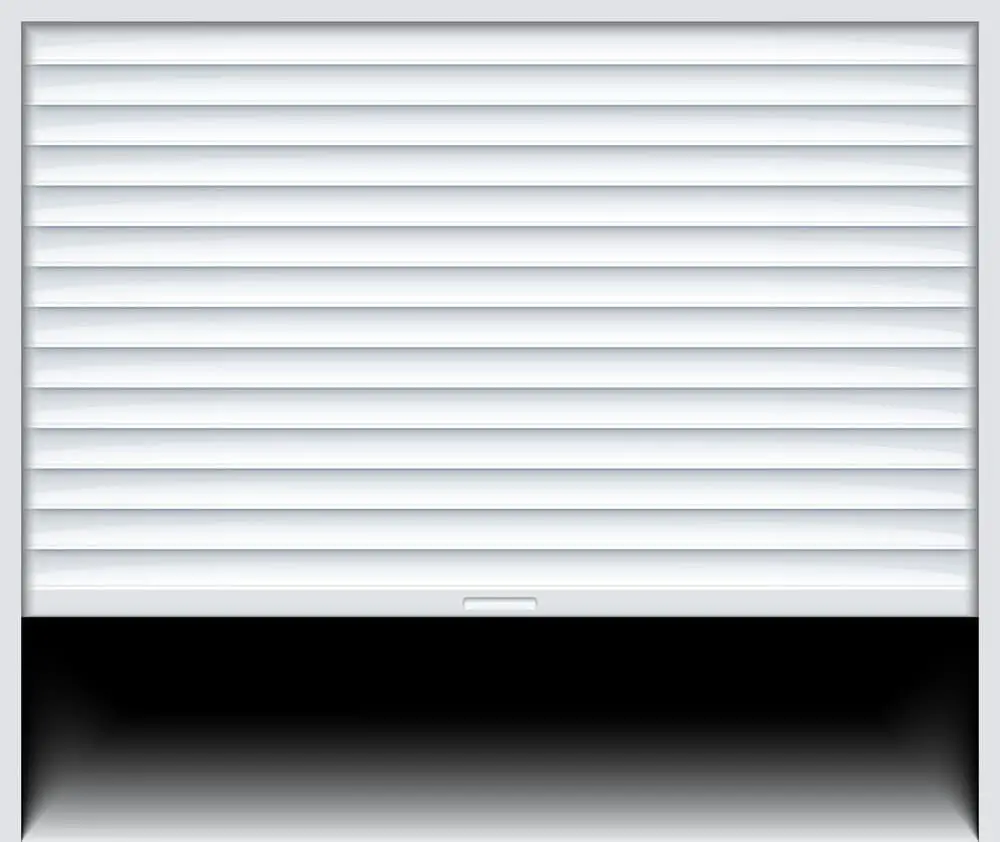
When considering alternative materials for your garage door, aluminum is a sturdy and reliable option worth exploring. Unlike wood, this choice eliminates concerns about rotting, warping, or expanding over time. Moreover, aluminum can be coated with anti-rust and corrosion finishes to further minimize maintenance needs.
One potential drawback to consider is the material’s tendency to absorb heat, which could lead to higher energy bills during warm weather if your garage is attached to your main living space.
Steel
For those seeking a trifecta of appeal, longevity, and eco-friendliness in one package, a steel garage door is an excellent choice. Not only can they be tailored to suit any garage door style or type, but they also offer the flexibility to be finished with various materials – from wood grain effects to paint – allowing homeowners to add a personal touch.
Furthermore, these doors are remarkably low-maintenance, minimizing the need for frequent upkeep and ensuring your steel garage door remains a prized feature of your home.
Glass
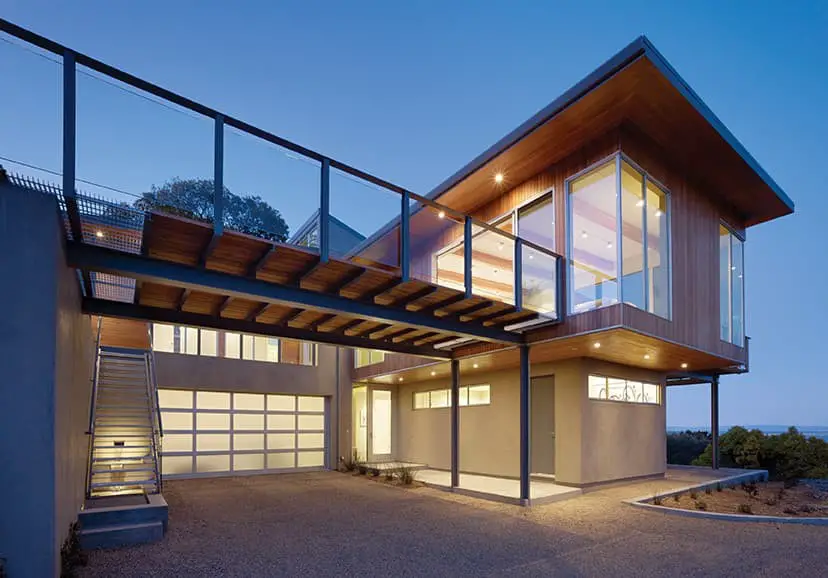
To elevate the style of your garage door, consider opting for a sleek glass material. This choice offers the benefits of being low-maintenance and providing good insulation. However, it’s essential to be aware that glass doors can be prone to cracking and breaking, which may result in costly repairs down the line.
Fiberglass
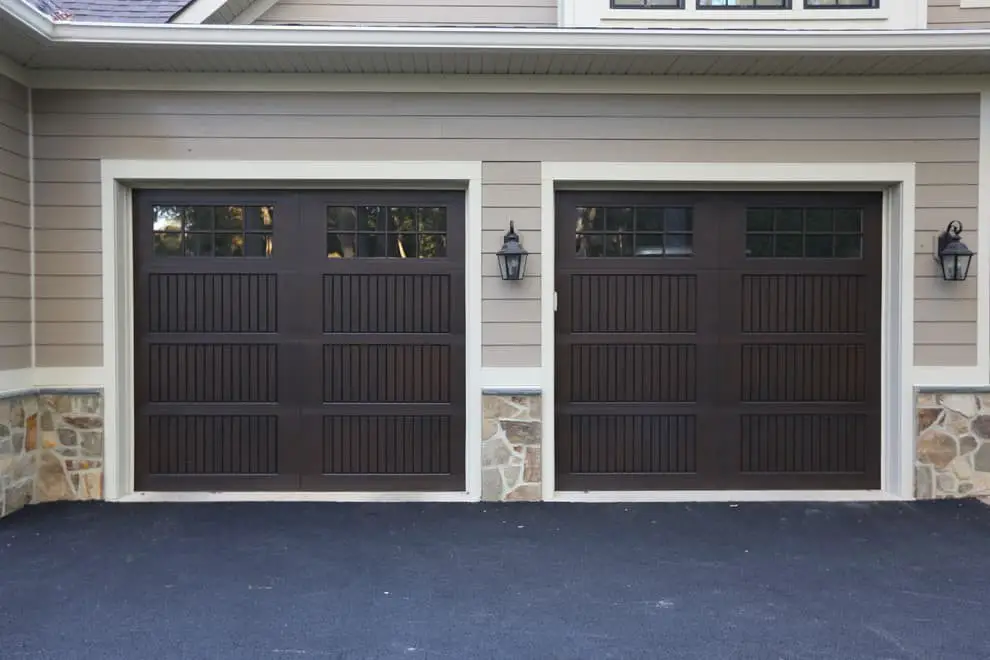
To enhance the durability of glass while maintaining its modern aesthetic, a cost-effective alternative is fiberglass. This material boasts several advantages over traditional options. Not only is it remarkably lightweight, but it also provides a quieter operating experience. Furthermore, fiberglass requires minimal upkeep, as it does not exhibit tendencies to expand, warp, or rot, making it an attractive choice for those seeking a low-maintenance solution.
Composite
When seeking a cost-effective and eco-friendly alternative to traditional wood garage doors, composite options are definitely worth considering. These innovative products typically comprise fiberboard attached to a wooden frame, offering not only an attractive wood-like appearance but also enhanced insulation capabilities. This dual benefit makes them a more energy-efficient choice compared to many other garage door materials.
Types of garage door opener
When selecting a garage door opener, convenience is key. To make an informed decision, it’s crucial to evaluate the features of different openers and compare them to one another. By doing so, you’ll be able to identify the best option that meets your unique needs and preferences.
Belt drive
The most renowned garage door opener still stands out due to its incredibly quiet operation, making it an excellent choice if your bedroom or living room shares a wall with the attached garage. Although it demands routine maintenance, the only crucial aspect to monitor is the rubber belt’s condition, ensuring smooth and prolonged performance.
Chain drive
While belt drives may be quieter, chain drives offer a more budget-friendly option. Specifically, they’re an ideal choice for lightweight doors made of aluminum, as they can handle these types of materials with ease. One of the biggest advantages of chain drives is their low maintenance requirements. All you need to do is regularly inspect and lubricate the chain to ensure smooth operation, making them a convenient option for those who want to minimize upkeep.
Screw drive
For heavier garage doors, particularly those with larger dimensions or double-door configurations, this type of opener is highly recommended. This threaded rod-based mechanism provides the necessary lifting power to effortlessly operate these more substantial doors, ensuring smooth and quiet operation. Its straightforward design also results in lower maintenance requirements, making it a practical choice for homeowners seeking hassle-free garage door management.
Direct drive
The GarageMaster Q100 is renowned for being one of the quietest garage door openers on the market, utilizing its stationary steel chain design to effortlessly lift the garage door without producing a peep. This streamlined construction boasts fewer moving parts compared to other garage door openers, resulting in significantly reduced maintenance needs and a lower likelihood of damage.
Its simplicity is matched only by its efficiency, making it an attractive option for homeowners seeking a hassle-free experience.
Smart openers
In recent years, smart garage door openers have gained popularity for their ergonomic and remote operation capabilities. Investing in one can bring a high level of convenience and efficiency to your daily routine. For instance, you can install an app that allows you to monitor the movement around your garage area from afar. This means you can simply tap on the app to open or close your garage door without having to leave your vehicle, eliminating the need for unnecessary steps.
Swing-out carriage garage door opener
To enjoy a smooth and quiet operation of your carriage garage door, installing a motorized opener is a must. This technology allows you to harness the traditional swing-out mechanism while minimizing noise levels. In fact, with a well-programmed garage door opener, you can achieve seamless performance without any disruptions.
Garage door configuration
The typical setup for a garage door is largely influenced by the dimensions of the garage itself, specifically its opening. Two primary configurations emerge as a result, characterized by distinct characteristics.
Single bay door
This versatile tool is suitable for a wide range of vehicles, from compact cars to larger models. Its greatest asset lies in its ability to alleviate concerns about the reliability of both doors. On the downside, it may not possess the necessary power to lift the door if the garage door opener malfunctions.
Double door
One of the key advantages of double doors is their ability to be operated simultaneously, making them an ideal choice for homeowners who own larger vehicles or have limited mobility. This convenience also simplifies the installation process, as you only need a single garage door opener. Furthermore, the design flexibility of double doors allows you to customize the look and feel of your garage entrance to suit your personal taste.
Accessories
While it’s easy to overlook garage doors, installing the right accessories can elevate their functionality and enhance your overall garage experience. Some of the most popular options include:
Lights
Most garage doors come equipped with a default accessory that allows for customization of lighting options. The style of your garage door will dictate which light fixtures to choose from, ensuring a harmonious match between the two. For instance, traditional, Mission, and rustic styles are perfectly complemented by the soft glow of lantern lights situated near the garage entrance.
Pergola
To elevate the aesthetic appeal of your garage door and enhance its functional capabilities, consider incorporating a pergola into your outdoor design. Ensure that the structure is substantial enough to accommodate any obstructions around the entrance, such as pathways or vegetation. The added benefit of a pergola is the provision of shade and visual interest through the use of climbing plants.
Not only will this feature add character to your curb, but it will also create a welcoming atmosphere for visitors.
Hardware
When it comes to setting up your garage door, it’s crucial to have the right hardware in place. A subpar setup not only compromises the functionality of your door but also poses safety risks for you and your family. To ensure a safe and smooth operation, consult with your contractor or hardware expert to determine the specific components required for your installation.
Insulation
While it may initially seem like an added expense, investing in an insulated garage proves to be a worthwhile decision in the long run. The ability to maintain a consistently optimal temperature, unaffected by external climate fluctuations, ensures your vehicle remains in top condition. This is particularly crucial for individuals residing in regions prone to severe weather conditions.
Factors to consider when buying a garage door
When it comes to purchasing a garage door, there’s more to consider than just the basics we’ve covered earlier. To ensure you’re making an informed decision and creating a functional space that meets your needs, take note of these crucial factors before finalizing your garage layout or choosing a specific door. Take the time to think about…
Appearance
When selecting a garage door, the possibilities can seem overwhelming due to the vast array of sizes, colors, and designs available. To make an informed decision, it’s essential to consider the overall structure and architecture of your home, as this will serve as the foundation for choosing the right accessories and additional features to complement your property.
Durability
When selecting a garage door material, it’s crucial to consider its ability to withstand the harsh conditions of an outdoor environment. Each material has its unique strengths and weaknesses, so it’s essential to understand these characteristics before making a decision. A garage door material that can resist the elements and maintain its integrity over time is ideal. By recognizing the pros and cons of each option, you’ll be better equipped to choose the right one for your needs.
Opener
While investing in a smart garage door opener may not be a necessity for everyone, those with the means can greatly benefit from this innovative technology. Two key considerations when selecting an opener include ensuring it operates quietly and with ease, making the overall experience more convenient and enjoyable.
Upfront cost
When planning your garage door project, it’s crucial to factor in more than just the cost of the door itself. Consider the installation costs, labor fees, and any additional expenses associated with special features or customizations. These upfront costs can add up quickly, so it’s essential to have a realistic budget range in mind. If you’re not prepared for these expenses, consider opting for a standard or average garage door solution instead.
Maintenance
When it comes to the opener and hardware of your garage door, some components require more frequent maintenance than others. For instance, motorized openers necessitate regular lubrication and repairs are an inevitable part of their lifespan. Additionally, it’s crucial to consider the type of garage you have and how it operates in relation to your capacity for maintenance costs.
A garage that is heavily used, for example, may require more frequent upkeep compared to one that is used less frequently.
Energy efficiency
Insulation plays a crucial role in maintaining a comfortable temperature within your garage, extending beyond just the parked car to encompass other stored items as well. This factor highlights the importance of investing in door insulation to keep your garage energy-efficient and prevent an impact on your electric bill during harsher climate conditions.
FAQs
What is the most popular type of garage door?
Sectional garage doors are the most sought-after option, boasting a classic design that combines functionality with enduring style. Comprising multiple panels hinged together, these doors provide a versatile solution for single, double, or even triple-door configurations, offering homeowners a range of possibilities to suit their individual preferences and architectural styles.
How much should a new garage door cost?
The cost of a new garage door is largely dependent on several factors, including design, layout, accessories, and style. On average, the price tag can range from $1300 to $7000. A single-door garage door typically costs between $1000 and $1300, while a double-door setup can set you back anywhere from $1500 to $4000. It’s worth noting that the upper end of these ranges is often attributed to installation and labor costs.
What is the lightest garage door?
Fiberglass garage doors are often the go-to choice for manually operated doors. This is because they are incredibly lightweight, making installation and maintenance a breeze. Additionally, motorized systems and automatic openers can be easily integrated into fiberglass garage door designs, streamlining the installation process even further.
How thick should a garage door insulation be?
When it comes to insulating your garage doors, the key is to strike a balance between R-value and cost. For those opting for foam-based solutions, a thickness of 1-3 inches is generally recommended. This range provides sufficient thermal resistance without breaking the bank. On the other hand, metal sheet insulation offers a more affordable alternative, with gauges ranging from 24-26 being a sweet spot for achieving decent energy efficiency while keeping costs in check.
Are garage doors hard to install?
While it may seem feasible to tackle the installation process on your own, installing a garage door system requires a level of expertise and specialized tools. In reality, it’s not a DIY-friendly project that can be completed in just 24 hours, unless you’re an experienced handyman or professional. The complexity of the hardware, panels, and hinges demands a higher level of attention to detail and mechanical aptitude.
Moreover, incorrect installation can result in costly repairs and even pose a risk to your family’s safety, making it crucial to opt for professional installation.
Can garage doors be painted?
When it comes to painting garage doors, regardless of their material composition, the process begins with a solid foundation: primer and paint. Timing is crucial, as ideal conditions exist when the temperature remains moderate or the air is dry. This allows for even coverage and a lasting finish.
Can used garage doors be sold?
While it may come as a surprise, there’s indeed a thriving market where second-hand garage doors are bought and sold. What’s more intriguing is that these garage doors don’t even need to be functional to be traded. The companies involved in this industry acquire broken garage doors, refurbish them by making necessary repairs and upgrades, and subsequently put the revamped products back on the market.
Is there a standard size for garage doors?
When it comes to specifying dimensions for a garage door, there’s a general consensus on the ideal width and height. For width, an 8-20 foot range is commonly accepted, with single-car garages typically falling within the 8-10 foot bracket and double-car garages spanning between 16-20 feet. In terms of height, the average range for most garage doors, regardless of whether they’re singles or doubles, is around 7-9 feet.
Can garage doors be frozen shut?
Preventing Garage Door Frustration: Tips for Winter WeatherWhen the mercury drops and rain turns to snow, homeowners often find themselves dealing with a common yet inconvenient problem: frozen garage doors. But there is no need to let Mother Nature get the best of you! By taking proactive measures, you can ensure your garage door remains functional and safe throughout the winter months. For starters, regular shoveling is crucial during this time.
Clearing ice buildup from your garage door’s surface helps protect the hardware mounted on it. This simple act can save you from costly repairs down the line. Another critical aspect to consider is the maintenance of your garage door’s internal components. Old seals and unlubricated drives are particularly susceptible to damage when a garage door is frozen shut.
Replacing these parts can be time-consuming and expensive, which is why regular check-ups – especially before and after winter – are essential to identify any potential issues early on.
Is replacing the garage door a good investment?
When considering the resale value of a property, it’s essential to factor in the impact of garage doors. According to real estate experts, homeowners can expect to recoup nearly 95% of the cost associated with replacing these doors once they decide to put their home on the market. This is due in part to the fact that the garage door is one of the first features potential buyers notice when approaching a property, making it a crucial aspect of curb appeal.
In fact, upgrading garage doors can even boost a home’s price point by up to 4%, making it a worthwhile investment for anyone planning to sell in the future.
How long should garage doors last?
While average lifetimes for most garage doors range from 15 to 30 years, various factors can influence their durability. Your location, maintenance habits, and the surrounding environment all play a significant role. Moreover, usage patterns are a key indicator of longevity, with frequent use potentially shortening a door’s lifespan. The quality of materials and hardware used in its construction also has a direct impact on how well it will perform over time.
What is the cheapest garage door?
When it comes to garage doors, reports suggest that the most affordable option is an embossed steel door with a faux wood-grain finish. Priced under $1000, this choice effectively mimics the appearance of real wood. However, if you’re seeking a more premium aesthetic, consider alternatives like glass or fiberglass for a distinctly upgraded look.
How much is the installation cost for garage doors?
Garage door prices can vary significantly depending on the type and size of the door. On average, standard single-car garage doors typically fall within a price range of $600 to $1,500, while double-car garage doors tend to cost between $800 and $2,500. Additionally, labor costs associated with installation or replacement can add up quickly, ranging from $300 to several hundred dollars more.
If you’re in the market for a new unit, you can expect to pay anywhere from $300 to $1,200, depending on the features and quality of the door.
How often should a garage door be serviced?
For optimal performance and longevity, it’s essential to schedule regular professional services for your system. A maintenance check every six months is recommended, with one of these checks ideally taking place during the fall season to prepare your equipment for the winter period. During this process, ensure that all drives are thoroughly inspected and all gears are properly lubricated to prevent premature wear and tear.
Can a garage door overheat?
Overusing your garage door can lead to a surprising consequence: overheating. The culprit behind this issue is the opener, which gets overworked with repeated use. Automatic garage doors are more susceptible to this problem since they rely on motors and electronics that generate heat. As you open and close your garage door multiple times, the opener’s internal components start to produce excess heat, potentially causing temperatures to rise.
This phenomenon is most evident in automatic systems, where the motorized mechanisms contribute to the accumulation of heat.
What are the common causes of garage door damage?
To prevent future damages and ensure your garage door remains in top condition, it’s essential to identify the most common causes of repair. By understanding these potential issues, you can take proactive steps to address them before they become major problems. One of the primary causes of garage door damage is broken springs. Overuse and excessive pressure can cause springs to wear out, leading to complete system failure.
Replacing springs can be a complex process, so it’s crucial to detect any damage early on and have them inspected by a professional if necessary. Another common culprit is broken cables. These critical components are responsible for opening and closing the garage door, but they can weaken with age or become damaged due to excessive use. If left unchecked, snapped cables can cause the entire system to fail. Regular inspections can help identify any issues before they become major problems.
Worn-out rollers are another common issue that can affect the smooth operation of your garage door. Jerky movements or difficulties opening and closing the door may indicate worn-out rollers. Since these signs can be subtle, it’s essential to stay vigilant and have your garage door inspected regularly to catch any issues early on. The hardware set of your garage door is also prone to wear and tear.
As with any moving part, this system can become loose or tight over time, leading to problems if left unchecked. Regular checks for proper tension and movement can help prevent mishaps. If you’re unsure about the condition of your hardware, it’s always best to consult a professional. Finally, misaligned tracks can cause a range of issues, from jerky movements to difficulty opening and closing the door. Failure to address this problem promptly can lead to further complications down the line.
To avoid these problems, make sure to close your garage door slowly and carefully, and consider implementing regular maintenance tips to keep your system in top shape.
Do car insurances cover backing accidents on garage doors?
Most states require motorists to carry liability coverage in their car insurance policies, which covers damages caused to others’ property. This means that if a backing accident occurs near a garage door, you may be able to claim partial or full coverage from your policy, depending on the severity of the damage. While state-specific variations exist, this fundamental requirement provides a sense of security for motorists and helps ensure they’re prepared in the event of an accident.
Why do the hinges of the garage door break?
The garage door hinge, often considered a crucial component of the overall hardware setup, can suffer from damage caused by vehicle impacts or premature wear due to age. When this occurs, it’s typically an indication that replacement is necessary.
In the event you suspect the hinge has already sustained significant damage – whether it’s broken, dented, or simply worn out – prompt replacement is advisable to ensure continued smooth operation and maintain overall garage door functionality.
How many times a day can you open and close the garage door?
Garage doors require regular maintenance to last up to three decades, with experts recommending an annual usage of around 1500 cycles. This translates to a moderate frequency of opening and closing – approximately 4-6 times per day. By adhering to this guideline, garage door owners can expect their equipment to operate efficiently and maintain its overall lifespan.
Is it okay to leave the garage door open all the time?
While leaving your garage door open indefinitely might seem harmless, it can actually become an attractive haven for animals to make themselves at home. This isn’t just limited to pets – squirrels, birds, and other critters may also see the garage as a cozy spot to settle in, thanks to its dual purpose as both a storage area and potential shelter. This influx of unwanted guests can lead to cluttered spaces, damaged belongings, and even health concerns if their waste is left unchecked.
Conclusion
Garage doors are a crucial component in completing the overall picture of a garage’s functionality and aesthetic appeal. Our previous discussions have emphasized the importance of selecting garage doors that not only complement the exterior design but also cater to the unique needs and preferences of the household.
While curb appeal and visual impact are certainly key factors, it is equally essential to consider how garage doors will meet the functional requirements and personal tastes of family members.
Related Posts
When it comes to enhancing the curb appeal of your home, one crucial element often gets overlooked – the garage door. A mismatched color scheme can instantly detract from the overall aesthetic, making it essential to find a harmonious combination with your house’s exterior. For instance, if you have a yellow house, a well-chosen garage door color can create a beautiful visual balance. Similarly, for those with green houses, finding the perfect pairing is crucial.
Beyond just aesthetics, maintaining your garage door is vital to ensure it continues functioning smoothly and safely. Regular maintenance tasks are often overlooked, but neglecting these duties can lead to costly repairs down the line. In addition to curb appeal, a functional garage is also essential for homeowners. Knowing how to make your garage more practical, as well as understanding the key differences between carports and garages, can greatly impact your daily life.
Finally, selecting the right dimensions for your garage door is vital to ensure it fits seamlessly into your home’s overall design.


